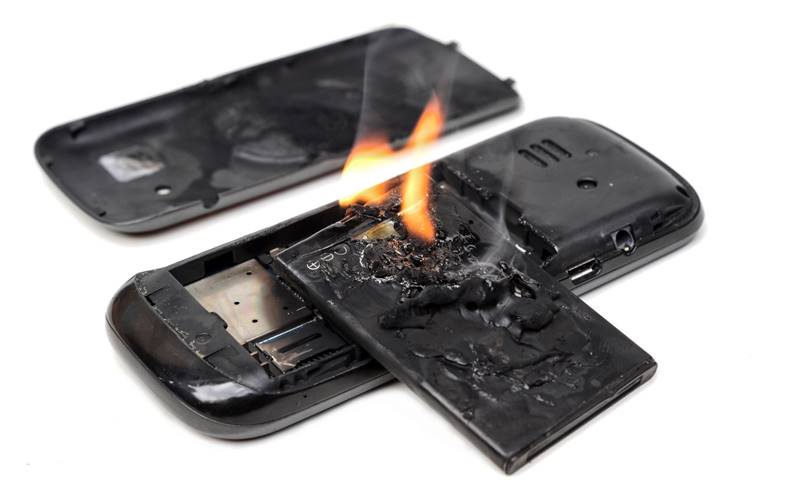case Samsung Galaxy Note 7 seems to be one meant to "wake up" the smartphone manufacturing industry to the idea of creating smart but safe mobile phones. In this idea, a group of Stanford University researchers have created batteries that are safe against fires because they "cool" the energy cells before they overheat.
These researchers added to the plastic fibers of the batteries a triphenyl phosphate that separates the negative electrodes from the positive ones. This phosphate is normally used to prevent explosions in various electronic products, and if the temperature of a battery reaches 150 degrees, the plastic fibers melt and release this phosphate inside.
After the release of the chemical compound in the battery, the explosion is prevented immediately, the duration required for its propagation being only 0.4 seconds. In the past, attempts to implement such safety measures in batteries substantially reduced their performance, but in this situation, nothing changes other than increasing the safety of users.
The batteries of the future will be safe against explosions
At the moment, this innovation is still in the testing process and the researchers are trying to ensure that overcharging or fully discharging does not activate the phosphate. If these problems will not exist, then the technology could be sold, or offered to battery manufacturers, who could use it in future components sold to smartphone manufacturers.
"Using our 'smart' separators, battery electrochemical performance will not be affected by the flame retardant under normal conditions. However, once there is a potential thermal runaway, the flame retardant will be activated and nip the fire or explosion in the bud."
The entire scandal related to the Samsung Galaxy Note 7 has generated a lot of discussion regarding the safety of people who use smartphones in their daily lives. Innovations of this kind aim to bring more peace of mind to those who use a smart mobile terminal in their everyday life, but everything depends on the evolution of their development.
In the case of Stanford's innovation, it could be a few years before it could really be offered in smartphones sold worldwide.

















